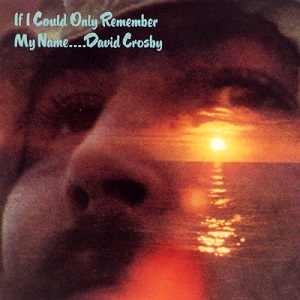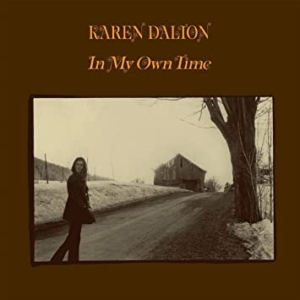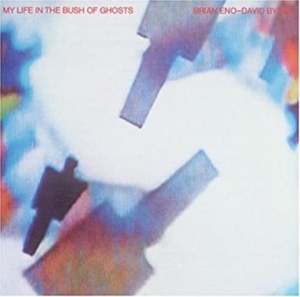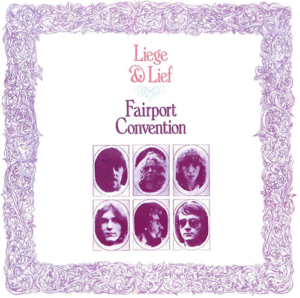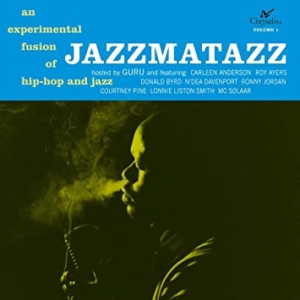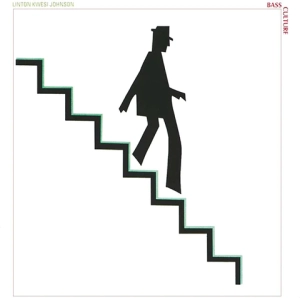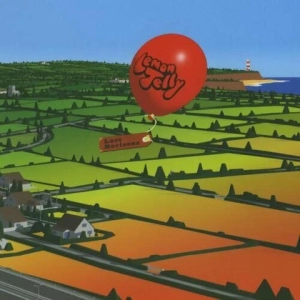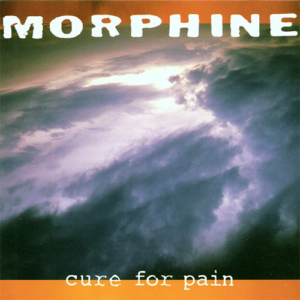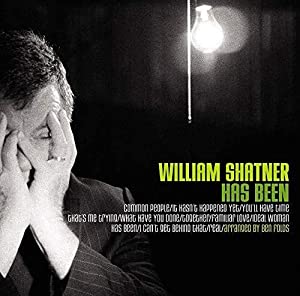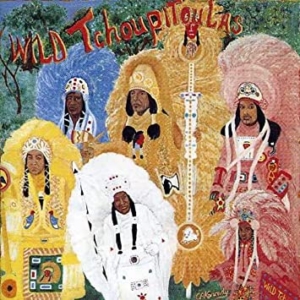Unheard Musical Delights
Welcome to the February Paradise Found Records blog. At the store we pride ourselves on our musical knowledge. And as anyone who’s thrown a listening party can tell you (the next one here is on Friday, February 24), there are few things more fun than blowing someone’s mind with some obscure, lesser-known musical gem. In that spirit, here are ten albums guaranteed to enrich your ears.
David Crosby — If I Could Only Remember My Name
The recently departed Crosby was a huge force in the American musical landscape of the seventies and eighties, first as a founding member of The Byrds and later with supergroup Crosby, Nash, Stills and Young. His first solo record contains no hit singles and undersold compared to other works by his bandmates, but don’t let that fool you. Recorded in San Francisco, 1971’s If I Could Only Remember My Name is a summit of California musical legends including Jerry Garcia, Bill Kreutzmann and Phil Lesh of the Grateful Dead, Paul Kantner, Jorma Kaukonen and Grace Slick from the Jefferson Airplane, Graham Nash and Neil Young from CSNY, Joni Mitchell and others. The record combines extended jamming (“Cowboy Movie”) with lush harmonies (“Tamalpais High”). Where else can you hear Garcia and Young try to outduel each other’s screaming guitar solos? (Favorite track: “Cowboy Movie”)
Karen Dalton — In My Own Time
Folk singer Karen Dalton toiled in relative obscurity outside of folk circles before her tragic death from AIDS at fifty-five in 1993; it was only after her passing that she started to receive wider recognition, thanks in part to promotion by Bob Dylan, Jack White and Nick Cave. Her second record is the best place to start to explore her legacy. Released in 1971, it features Dalton’s highly evocative and unique blues- and folk-styled vocals over a strong set of covers, including R&B (“How Sweet It Is,” “When a Man Loves a Woman”), country (George Jones’ “Take Me”), a song from The Band debut (“In a Station”) and blues (“In My Own Dream”). Dalton’s voice is haunting–she was often compared to Billie Holliday–and this record deserves a larger audience. (Favorite track: “Something on Your Mind”)
Brian Eno-David Byrne — My Life in the Bush of Ghosts
Remain in Light is generally considered to be the most influential Talking Heads record, but this 1981 effort from David Byrne and producer Brian Eno (famed for his work with Bowie, U2 and others) is no less groundbreaking. The pair taped strange, multilingual and occassionally distorted passages off the air (e.g. a passionate evangelist, an enraged political radio host, a Lebanese mountain singer) and combined them with the polyrythmic, Afro-based funk of Remain in Light to create a danceable, otherworldly sound. Partnering infectious grooves with found sounds may be standard issue in 2023, but in 1981 it was unlike anything heard before and snuck under the radar of everyone that wasn’t already an Eno or Talking Heads fan. (Favorite track: “America is Waiting”)
Fairport Convention — Liege & Lief
Richard Thompson has had a long, successful career both as a solo artist and with ex-wife Linda Thompson, but he got his start in Fairport Convention, one of the first bands to play traditional folk songs with a jamming rock’n’roll mentality. 1969’s Liege & Lief, their fourth record, is the prototype that folk-rockers have been mining ever since. Thompson’s stellar guitar work occasionally evokes clanging bagpipes and the record covers a lot of ground, from extended takes on centuries-old folk tales “Matty Groves” and “Tam Lin” (which date, respectively, to 1613 and 1549) to the slow boil of “Reynardine” and the joyous bounce of “Come All Ye.” Dylan might have been the first folkie to go electric, but Liege & Lief, featuring the angelic vocals of Sandy Denny, traces the folk movement back to its British origins and adds the freeform improvisation that was a vital part of the psychedelic scene. (Favorite track: “Matty Groves”)
Guru — Jazzmatazz Volume 1
Another record that was way ahead of its time. In 1993, Gang Starr leader Guru recruited jazz legends Donald Byrd, Lonnie Liston Smith, Roy Ayers and Branford Marsalis to create a jazz-rap hybrid that is intoxicating, funky and spellbinding. With strong vocal assistance from Brand New Heavies lead singer N’Dea Davenport and french rapper MC Solaar, Guru crafts a vibe that’s chill, funk, jazz and rap at the same time. The rapper released three more volumes of Jazzmatazz, but none reached the highs or freshness of the first volume. (Favorite track: “When You’re Near”)
Linton Kwesi Johnson — Bass Culture
Brit Linton Kwesi Johnson (aka LKJ) is a noted author and poet. Much of his writing speaks to the struggles of the African-Caribbean community in Britain, as documented powerfully in the Small Axe anthology series on Amazon Prime. Best described as rap-reggae or dub poetry, LKJ worked with legendary dub producer Dennis Bovell on records that feature his spoken word poetry delivered in a Jamaican patois (he was born in Jamaica but moved to the UK as a child) with bubbly, irresistable reggae and dub riddims. Released in 1980, his fourth record is often jarring, but the dissonance of political poetry about oppression and violence layered over the catchiest reggae imaginable is hard to ignore. Few other records will expand your mind this much while keeping your toes tapping. (Favorite track: “Bass Culture”)
Lemon Jelly — Lost Horizons
Another record that defies categorization–notice a theme here? Lemon Jelly are the creation of Brit duo Fred Deakin and Nick Franglen. Their first full-length record, released in 2002, is a trip hop/electronic blend. This is joyful, spirited music, long tracks that layer (and unlayer) instruments over infectious melodies that carry the listener through new, uncharted musical landscapes. Famously described as music to create to, Lost Horizons features samples and proto-EDM grooves, most notably on “Space Walk,” which takes astronaut audio from the 1965 Gemini Mission and sets it over the most uplifting sound you’ll ever hear. Only released on CD/streaming outside the UK, vinyl copies of Lost Horizons fetch $300+ on Discogs. (Favorite track: “Space Walk”)
Morphine — Cure for Pain
Morphine’s run was horrifically cut short by Mark Sandman’s tragic, onstage death in 1999. Although the group didn’t make a bad record, the pinnacle was 1993’s Cure for Pain, their sophomore effort. A trio with drums, sax and Sandman on two-string bass, the group’s low fi sound is equally appropriate for a smoky basement poetry slam (“Let’s Take a Trip Together”) or a raucous nightclub (“Thursday”). Cure for Pain spotlights Sandman’s witty lyrics and the band’s Beat mentality. The beautiful “In Spite of Me” features Sandman’s lesser-used guitar skills, and album opener “Buena” has been sampled often for commercials. 2023 will finally see the first-time-on-vinyl releases of the group’s final two records, Like Swimming and The Night. (Favorite track: “Candy”)
William Shatner — Has Been
No, this is not a typo. In addition to his intentionally awful “Golden Throat” series, actor William Shatner paired with Ben Folds to make this excellent 2004 record with assists from artists as wide-ranging as Henry Rollins, Joe Jackson, Aimee Mann, Brad Paisley and the aforementioned Lemon Jelly. With rare exceptions, Has Been is intended–and deserves–to be taken seriously. Shatner’s self-deprecating humor (“Common People,” “I Can’t Get Behind That”) may be on display, but other tracks are deeply moving, like “What Have You Done,” which recounts his tragic discovery of his dead wife in their swimming pool. Author Nick Hornby penned the lyrics to the sadly beautiful “That’s Me Trying,” a story of a pathetic, long-checked-out father trying to reconnect with his daughter. Not to be missed. (Favorite track: “That’s Me Trying”)
The Wild Tchoupitoulas — The Wild Tchoupitoulas
This 1976 release is my favorite collection of New Orleans music, no small feat. The Wild Tchoupitoulas were legendary crescent city funksters The Meters joined by their Uncle George “Big Chief Jolly” Landry to capture the rhythm and flavor of the Mardi Gras Indians (the band took its name from George’s tribe). Its grooves include familiar staples of the New Orleans sound (“Hey Pocky Way,” “Brother John”). When Uncle George starts chanting (“Indian Red”) and when the band lock into their mojo (“Hey Mama),” you’ll feel like you’re sauntering down Frenchman Street on your own personal Second line. (Favorite track: “Hey Mama”)

